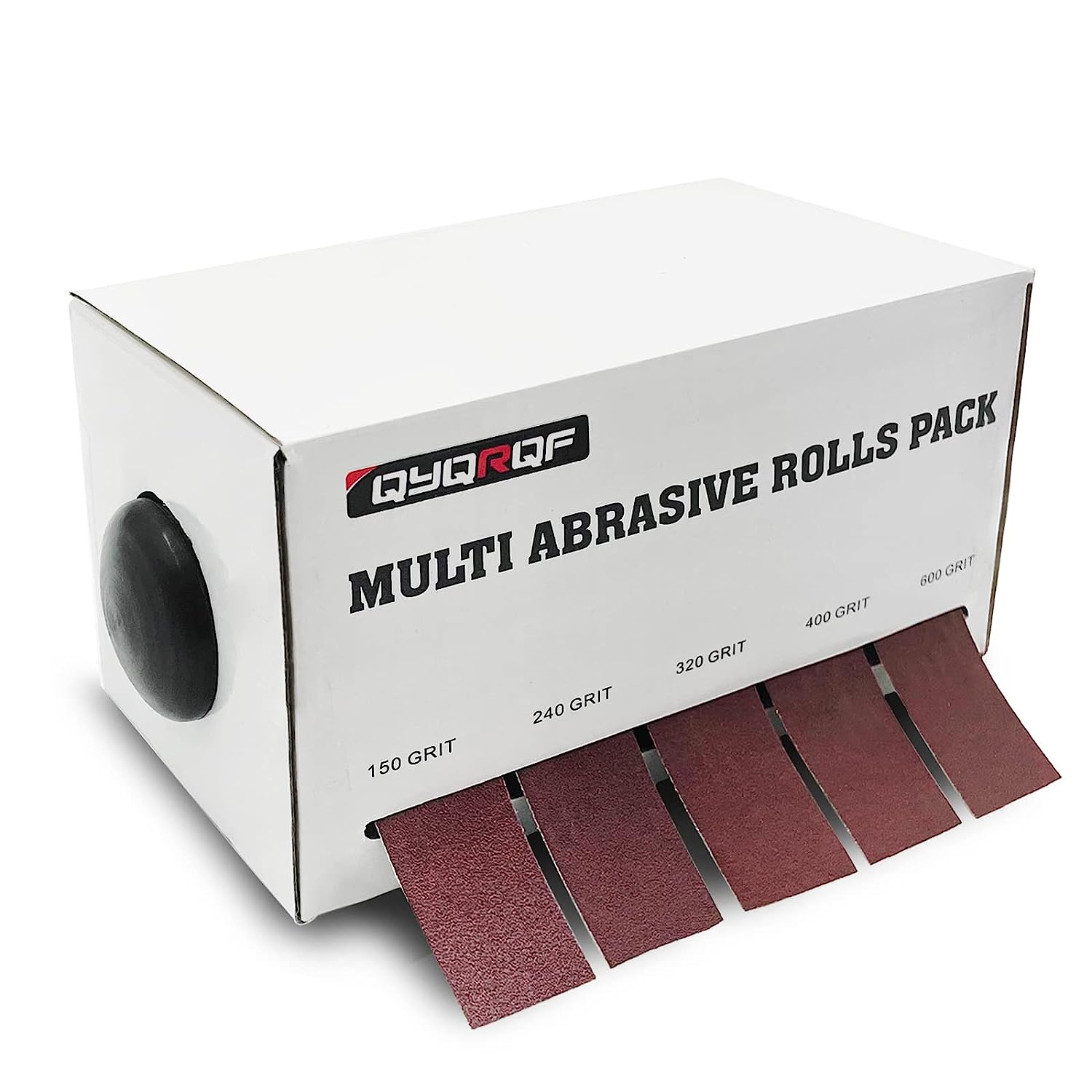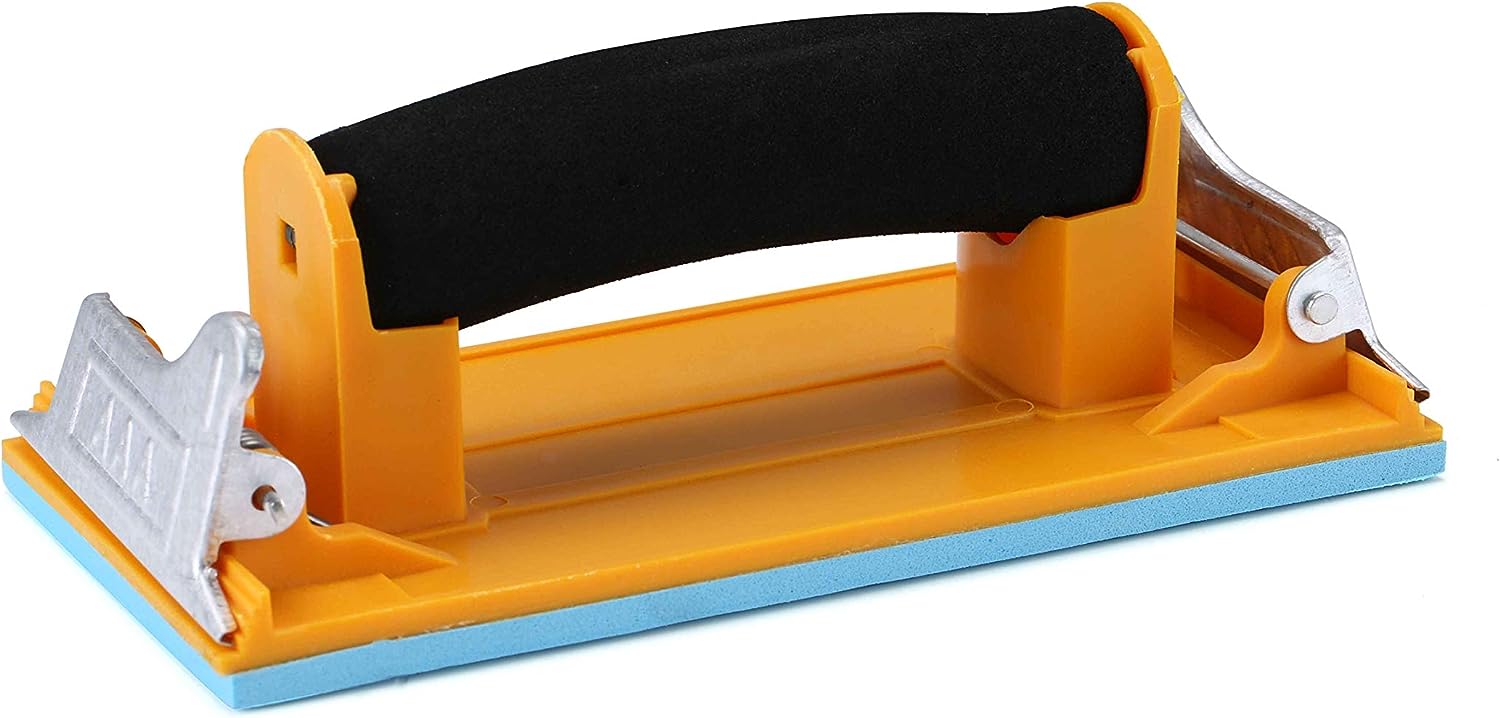Sanding plaster surfaces is an essential step in achieving a smooth and flawless finish. Whether you are working on a home renovation project or preparing a wall for painting, sanding helps to remove imperfections, create a level surface, and promote better adhesion of paint or other finishes. One of the key tools used in this process is sandpaper, also known as abrasive paper. In this article, we will explore the role of sandpaper in sanding plaster surfaces, the different types of sandpaper available, and some tips for achieving the best results.
The Best Sandpaper for Plaster

Emery Cloth Roll, 5 Grits Abrasive Sandpaper Rolls

BLACK+DECKER 2.0 Amp Electric 1/4 Sheet Orbit Sander

Aouker HS85180 Hand Sander
The Importance of Sanding Plaster Surfaces
Before delving into the role of sandpaper, it is crucial to understand why sanding plaster surfaces is necessary. Plaster is a popular material used for walls and ceilings due to its durability and smooth finish. However, during the installation or repair process, imperfections such as bumps, ridges, and uneven surfaces can occur. Sanding helps to eliminate these flaws and create a uniform and visually appealing surface.
Additionally, sanding plaster surfaces is essential for proper paint adhesion. Paint needs a smooth and clean surface to adhere to effectively. If the plaster surface is rough or uneven, the paint may not adhere properly, leading to a patchy or uneven finish. Sanding helps to create a roughened surface that allows the paint to grip and bond effectively.
The Role of Sandpaper in Sanding Plaster Surfaces
Sandpaper is a versatile tool that plays a crucial role in sanding plaster surfaces. It consists of a sheet of paper or cloth with an abrasive material bonded to one side. The abrasive material, commonly made of minerals such as aluminum oxide, silicon carbide, or garnet, helps to remove the plaster’s imperfections and create a smooth surface.
When sanding plaster surfaces, sandpaper performs several important functions:
- Removing imperfections: Sandpaper’s abrasive surface helps to remove bumps, ridges, and other imperfections in the plaster. By applying pressure and moving the sandpaper in a back-and-forth motion, the abrasive particles gradually wear down the high spots, resulting in a more even surface.
- Smoothing rough areas: In addition to removing imperfections, sandpaper also helps to smooth rough areas in the plaster. This is particularly important when repairing damaged plaster or blending new plaster patches with existing surfaces.
- Creating a key for paint: Sanding plaster surfaces creates a roughened texture that provides a better surface for paint adhesion. The tiny scratches left by the sandpaper allow the paint to grip the surface more effectively, resulting in a longer-lasting and more durable finish.
Types of Sandpaper for Sanding Plaster Surfaces
There are various types of sandpaper available, each with its own characteristics and best uses. When sanding plaster surfaces, it is important to choose the right type of sandpaper to achieve the desired results. Here are some common types of sandpaper used for sanding plaster surfaces:
- Aluminum Oxide Sandpaper: This type of sandpaper is durable and long-lasting, making it suitable for sanding plaster surfaces. It is available in different grits, ranging from coarse to fine, allowing you to choose the appropriate level of abrasiveness for your project.
- Silicon Carbide Sandpaper: Silicon carbide sandpaper is known for its excellent cutting ability and is often used for sanding hard materials such as plaster. It is available in both wet and dry forms, making it suitable for various sanding applications.
- Garnet Sandpaper: Garnet sandpaper is a natural abrasive that is gentle on plaster surfaces. It is commonly used for fine sanding and finishing tasks.
When selecting sandpaper for sanding plaster surfaces, consider the level of abrasiveness required and the condition of the plaster. Coarse grit sandpaper, such as 60 or 80 grit, is suitable for removing significant imperfections or rough areas. Fine grit sandpaper, such as 120 or 150 grit, is ideal for smoothing the surface and preparing it for painting or other finishes.
Tips for Sanding Plaster Surfaces
To achieve the best results when sanding plaster surfaces, consider the following tips:
- Prepare the surface: Before sanding, ensure that the plaster surface is clean and free from dust or debris. Use a damp cloth or sponge to wipe away any loose particles.
- Use the right sandpaper: Select the appropriate type and grit of sandpaper for your project. Coarse grit sandpaper is suitable for initial sanding, while fine grit sandpaper is ideal for achieving a smooth finish.
- Work in stages: Start with a coarse grit sandpaper to remove major imperfections, then gradually move to finer grits for smoothing the surface. This helps to achieve a more even and polished result.
- Use a sanding block: Using a sanding block or a sanding sponge can help to distribute pressure evenly and prevent uneven sanding. It also provides a comfortable grip and allows for better control.
- Wear protective gear: When sanding plaster surfaces, it is important to protect yourself from dust and debris. Wear a dust mask, safety goggles, and gloves to prevent inhalation of fine particles and protect your eyes and hands.
Conclusion
Sanding plaster surfaces is a crucial step in achieving a smooth and flawless finish. Sandpaper plays a vital role in this process by removing imperfections, smoothing rough areas, and creating a key for paint adhesion. Choosing the right type and grit of sandpaper is essential for achieving the desired results. By following the tips mentioned in this article and using the appropriate sandpaper, you can transform your plaster surfaces into a visually appealing and durable finish. So, the next time you embark on a plaster sanding project, remember the importance of sandpaper and its role in achieving a professional-looking result.



















